#this was a richard levinson series
Text

#hard copy#1987#80s#1980s TV#cityscape#VHS#VHSwave#vaporwave#synthwave#cyberpunk#gif#my gifs#this is not the litigious hard copy that ran for ten questionable seasons from 1989-1999#this was a richard levinson series
2K notes
·
View notes
Text
♡ FILMS FOR FAUNLET FASHION INSPO ♡
~~Got bored so compiled this (pretty extensive) list of film references for faunlet style and aesthetics, might be helpful for anyone looking to delve into and develop their style. Don't take this as some kind of gospel, it's just a bunch of movies and shows that I think can be useful reference points. My personal style and taste for example is a huge mix and amalgalm of stuff I see, from movie characters to paintings, books, comics, cartoons, music videos, haute couture collections, K- and J-idols, BJD dolls, even elements and staples from female fashion that I kind of genderflip or just outright mix into and merge with my own "masculine"/boyish/whatever faunlet fits. I think the secret to finding your style is to never limit yourself & always be creative (& clever ofc)! ♡
Feel free to suggest and tell me some of your personal films/shows that inspire you the most. I'm sure I forgot some stuff >.> Hope this helps somewhat lolol
WARNING: A LOT OF THESE HAVE MATURE THEMES AND +18 STUFF, SO DO RESEARCH BEFORE WATCHING AND PROCEED AT YOUR OWN DISCRETION, CAUTION & RESPONSIBILITY!
I. Academia/Schoolboy/Old Money/Preppy/Classic Faunlet Vibes

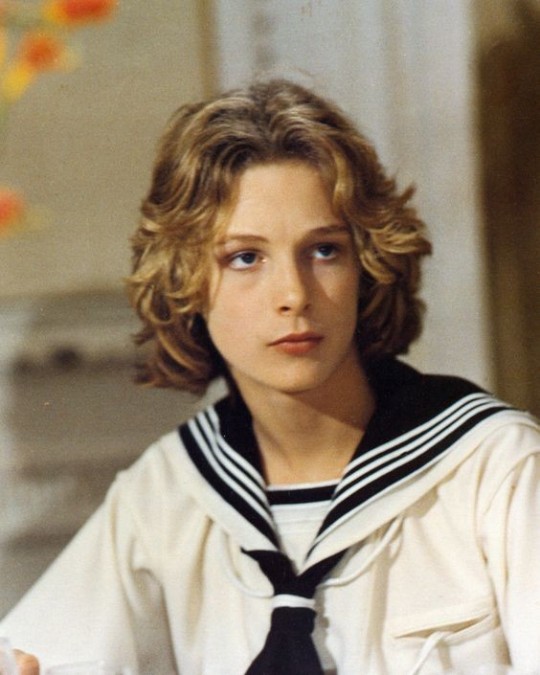

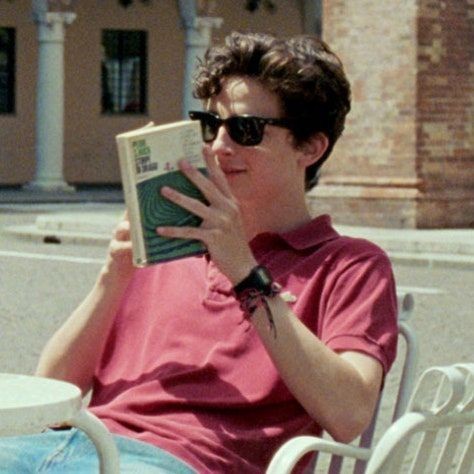
Les Amitiés particulières by Jean Delannoy
A Series of Unfortunate Events (Film and show)
Both versions of Charlie and the Chocolate Factory
Lord of the Flies (both versions tbh)
The Lion The Witch and the Wardrobe by Andrew Adamson
Kaze to ki no Uta + Natsu e no Tobira (Honestly most shounen ai anime especially from the 80s/90s)
CLAMP Gakuen Tanteidan
Kuroshitsuji i.e. Black Butler (probably the most famous ouji aka male lolita-influenced anime out there)
Ouran High School Host Club
Cardcaptor Sakura (Li's fits especially but also Touya's and Yukito's)
The Long Day Closes + The Neon Bible, by Terence Davies
If... by Lindsay Anderson
The Butcher Boy by Neil Jordan
Tea and Sympathy by Vincent Minnelli
Purple Noon by René Clément
Sleepers by Barry Levinson
The Basketball Diaries by Scott Kalvert
School Ties by Robert Mandel
The Dangerous Lives of the Altar Boys by Peter Care
Blue Spring by Toshiaki Toyoda
Death in Venice by Luchino Visconti
East of Eden (also Splendor in the Grass I guess?) by Elia Kazan
Lacombe Lucien (+ Au Revoir Les Enfants) by Louis Malle
Bad Education by Pedro Almodóvar
The Ice Storm by Ang Lee
La Luna + The Dreamers by Bernardo Bertolucci
Teorema by PP Pasolini (also Saló tbh bt I feel kinda weird recommending that lmfao even though it's a pretty well-established masterpiece & one of my favs)
Total Eclipse by Agnieszka Holland (teenage Arthur Rimbaud is a core faunler reference tbh, strange that I don't see him brought up more, though he's been a queer/twink culture icon for ages so yeah)
Les roseaux sauvages by André Téchiné
Call Me by Your Name by Luca Guadagnino
Deep Red by Dario Argento (only for the flashback Xmas scenes with the creepy little boy in knee-highs and Mary Janes tbh lol)
The Omen by Richard Donner
The Good Son by Joseph Ruben
Pinnocchio (OG Disney animation) (you could make a double feature with A.I. Artificial Intelligence by Spielberg/Kubrick too)
Les 400 coups by François Truffaut
L'enfance nue by Maurice Pialat
A Single Man by Tom Ford
Looking for Langston by Isaac Julien
Sacré College, Garçons d'Etage, Scouts and Gamins de Paris by JD Cadinot (WARNING: Cadinot's films are basically erotica/arthouse vintage gay p*rn so obviously 18+!!!!!)
II. More Contemporary/Gas Station/Trashy/Greaser/Hustler/Catalet Faunlet Vibes

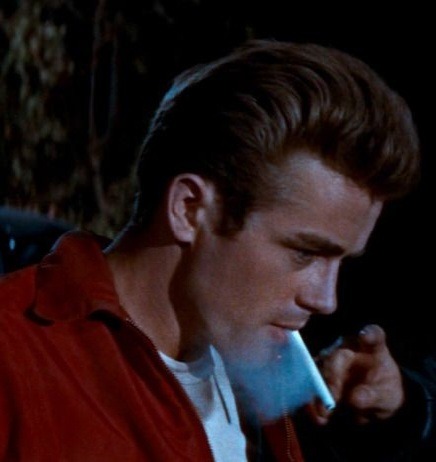
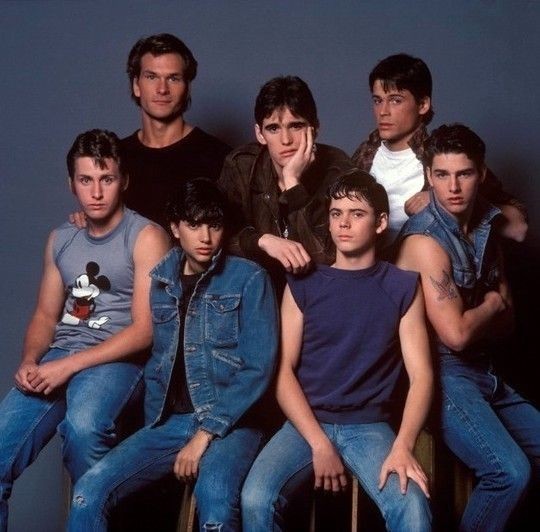

My Own Private Idaho (also Mala Noche and Elephant) by Gus Van Sant
Slight Fever of a 20-Year-Old + Like Grains of Sand by Ryosuke Hashiguchi
Mysterious Skin + Totally Fucked Up + Nowhere by Gregg Araki
Hustler White by Bruce LaBruce (+18)
Rebel Without a Cause by Nicholas Ray
Cry Baby + Polyester by John Waters
Pretty much any juvenile delinquent teensploitation 40s/50s Old Hollywood flick tbh
The Outsiders by FF Coppola
A Cruel Story of Youth + Sing a Song of Sex by Nagisa Oshima
Most of Edward Furlong and Vicent Kartheiser's 90s filmography (Pet Semetary 2, Brainscan, Little Odessa for Furlong; Heaven Sent, Another Day in Paradise, Masterminds for Vincent)
River's Edge by Tim Hunter
Young Soul Rebels by Isaac Julien
Sleepaway Camp by Robert Hiltzik
Le Diable Probablement by Robert Bresson
Permanent Green Light + Like Cattle Towards Glow (+18) by Zac Farley & Dennis Cooper
Pauline à la Plage by Eric Rohmer
The Smell of Us + Ken Park by Larry Clark
Flesh by Paul Morrissey
Lonesome Cowboys by Andy Warhol
Cruising by William Friedkin
Un couteau dans le cœur by Yann Gonzalez (though most of the male fashion in this is just ripping off Friedkin's Cruising and Cadinot films like Aime... comme Minet, Deuxième Sous-sol and Les Minets Sauvages so you could just watch those instead I guess lol)
Equation à un Inconnu by Francis Savel (erotica/+18)
Rebels of the Neon God by Tsai Ming Liang
Fireworks + Scorpio Rising by Kenneth Anger
Dope by Rick Famuyiwa
Cooley High by Michael Schultz
The Inkwell by Matty Rich
Red Hook Summer by Spike Lee
George Washington by David Gordon Green
American Graffiti by George Lucas and Bill Norton
All About Lily Chou-Chou by Shunji Iwai
Stand by Me by Rob Reiner
The Mudge Boy by Michael Burke
US Go Home by Claire Denis
Gummo by Harmony Korine
L.I.E. by Michael Cuesta
Palo Alto by Gia Coppola
Spetters by Paul Verhoeven
Fox and His Friends by RW Fassbinder
The Pit by Lew Lehman
O Fantasma by João Pedro Rodrigues
The Delta by Ira Sachs
What Have I Done to Deserve This + Law of Desire by Pedro Almodovar
The Partridge Family sitcom tbh lol, also the 70s era of the Mickey Mouse Club, pretty much any 70s media featuring male idols of the time like David Cassidy, Leif Garrett etc
Dazed and Confused by Richard Linklater
The Lost Boys by Joel Schumacher
Y Tu Mamá Tambièn by Alfonso Cuarón
Summer 85 by François Ozon
Les Chansons d'Amour + La Belle Personne by Christophe Honoré
Body Without Soul + Not Angels But Angels by Wiktor Grodecki (personally rly dislike the weird Christian melodramatic & imo exploitative direction of these documentaries bt the boys who are interviewed do the best they can to salvage it -- quintessential East European 90s cityboy looks)
III. Fantasy/Glam/Mystical/Sacred/Ancient/Historical Faunlet Vibes
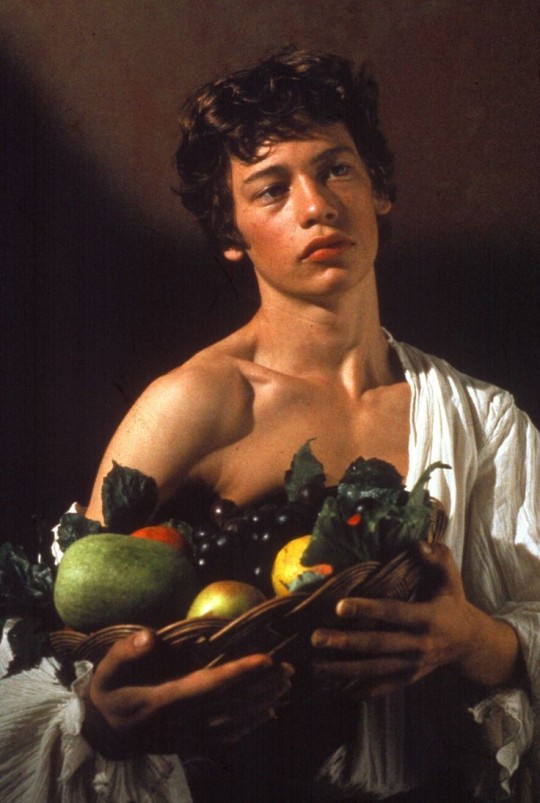
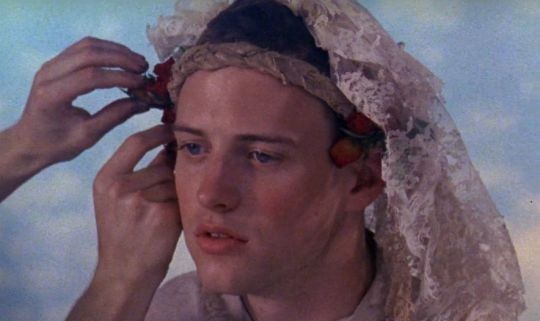
Pink Narcissus by James Bidgood
Caravaggio + Sebastiane by Derek Jarman
Peter Pan (any version tbh)
Fantasia (1940 Disney classic)
Tabou by Nagisa Oshima
Poison + Velvet Goldmine by Todd Haynes
Party Monster by Fenton Bailey
Satyricon by Federico Fellini
Der Rosenkönig by Werner Schroeter
The Blood of a Poet by Jean Cocteau
#faunlet#faunlet aesthetic#(Honestly almost didn’t post this cus a magician never reveals his secrets but was feeling kind & altruistic today sjsjsjs)#not sure if im keeping this on the blog 4 good bt u all can reblog it so itll live on 6ever#faunlet nation#this was on my drafts 4 a long time
381 notes
·
View notes
Text
Volume 1 of Spooky Month headcanons
The town the series is set is called Frighden (pronounce fry-dihn to sound like frighten).
Roy's family's last name is Levinson.
Richard and Ross' dad were best friends in high school and got matching tattoos (Ross' dad has a snake on his right arm, Richard has one on his left arm). Roy thinks his dad's tattoo is awesome and is definitely planing to get matching tattoos with Ross and Robert when they're older.
Bob moved to Frighden from his home town in Idaho in his early thirties.
Ignacio is divorced (seriously look at that man and tell me he hasn't been through a failed marriage). He's also retired.
When they were kids, Frank had a HUGE crush on Lila.
Pump and Susie's parents are named Shawn and Valery.
Jack can't stand high temperatures at all and always complains about it to John.
Jack isn't local to Frighden, but his family moved into town when he was in his early teens.
#spooky month#spooky month headcanon#spooky month headcanons#spooky month roy#spooky month richard#spooky month ross' dad#spooky month ross's dad#spooky month bob#bob velseb#spooky month ignacio#spooky month frank#spooky month lila#spooky month pump#spooky month susie#spooky month pump's dad#spooky month pump's mom#spooky month jack#spooky month john
28 notes
·
View notes
Text
Book List: Aesthetics, Neuroaesthetics, & Philosophy of Art
Why Science Needs Art: From Historical to Modern Day Perspectives 1st Edition by Richard Roche (Author), Sean Commins (Author), Francesca Farina (Author)
Feeling Beauty: The Neuroscience of Aesthetic Experience by G. Gabrielle Starr (Author)
An Introduction to Neuroaesthetics: The Neuroscientific Approach to Aesthetic Experience, Artistic Creativity and Arts Appreciation 1st Edition by Jon O. Lauring (Editor)
Brain, Beauty, and Art: Essays Bringing Neuroaesthetics into Focus by Anjan Chatterjee (Editor), Eileen Cardilo (Editor)
Philosophy of Art: A Contemporary Introduction (Routledge Contemporary Introductions to Philosophy) by Noël Carroll (Author)
Philosophy of the Arts: An Introduction to Aesthetics 3rd Edition, by Gordon Graham (Author)
The Oxford Handbook of Aesthetics (Oxford Handbooks) Revised ed. Edition by Jerrold Levinson (Editor)
Aesthetics and the Philosophy of Art: The Analytic Tradition, An Anthology (Blackwell Philosophy Anthologies) 2nd Edition, by Peter Lamarque (Editor), Stein Haugom Olsen (Editor)
What Art Is by Arthur C. Danto (Author)
After the End of Art: Contemporary Art and the Pale of History - Updated Edition (Princeton Classics Book 10) by Arthur C. Danto (Author), Lydia Goehr (Foreword)
Ways of Seeing: Based on the BBC Television Series (Penguin Books for Art) by John Berger (Author)
Art and Its Significance: An Anthology of Aesthetic Theory, Third Edition 3rd Revised ed. Edition, by Stephen David Ross (Editor)
But Is It Art?: An Introduction to Art Theory by Cynthia Freeland (Author)
The Art Question by Nigel Warburton (Author)
Arguing About Art: Contemporary Philosophical Debates (Arguing About Philosophy) 3rd Edition by Alex Neill (Editor), Aaron Ridley (Editor)
Art Theory: A Very Short Introduction (Very Short Introductions) by Cynthia Freeland (Author)
Aesthetics: A Very Short Introduction (Very Short Introductions) Illustrated Edition, by Bence Nanay (Author)
The Cambridge Handbook of the Psychology of Aesthetics and the Arts (Cambridge Handbooks in Psychology) by Pablo P. L. Tinio (Editor), Jeffrey K. Smith (Editor)
Aesthetics: A Comprehensive Anthology (Blackwell Philosophy Anthologies) 2nd Edition, by Steven M. Cahn (Editor), Stephanie Ross (Editor), Sandra L. Shapshay (Editor)
Philosophies of Art and Beauty: Selected Readings in Aesthetics from Plato to Heidegger by Albert Hofstadter (Author, Editor), Richard Kuhns (Author, Editor)
Art, Aesthetics, and the Brain Illustrated Edition, by Joseph P. Huston (Editor), Marcos Nadal (Editor), Francisco Mora (Editor), Luigi F. Agnati (Editor), Camilo José Cela Conde (Editor)
#study guide#book list#neuroscience#neuroaesthetics#philosophy of art#art philosophy#dark academia#dark academia study guide
22 notes
·
View notes
Text
Sono sempre stato un grande fan de La signora in giallo. Quando tornavo dal liceo certe volte non pranzavo neanche per non perdermi la puntata. Col tempo si è creata una sorta di atmosfera cult che ne ha impoverito il valore, ma se uno analizza la struttura delle puntate si rende conto della maestria dei tre creatori di ideare, come furono a suo tempo i romanzi gialli con Miss Marple di Agatha Christie, una serie leggera senza sbavature di trama. La componente drammatica che spesso si scantena nella risoluzione del delitto non ha nulla da invidiare ad opere teatrali di spessore (soprattutto per la bravura di Angela Lansbury); non solo, ci sono dei chiari riferimenti Hitchcockiani nello stile di regia e nelle ambientazioni della serie che ne alzano la qualità. Un giallo complicato è sempre piacevole da vedere e ti regala quella sensazione di sorpresa che non ti aspetti ma non è questo il caso, qui la semplicità dei casi ti porta ad elaborare teorie e ti fornisce dettagli che qualsiasi tipo di spettatore riesce a notare (se attento) portandoti a puntare il dito sul colpevole. Questa è la cosa che più apprezzavo della serie perché col tempo diventava un gioco ed è proprio quello che, secondo me, volevano Peter Steven Fischer, Richard Levinson, William Link.
4 notes
·
View notes
Photo

Richard Jay Belzer (August 4, 1944 – February 19, 2023) Actor, stand-up comedian, and author. He was best known for his role as BPD Detective, NYPD Detective/Sergeant, and DA Investigator John Munch, whom he portrayed as a regular cast member on the NBC police drama series Homicide: Life on the Street and Law & Order: Special Victims Unit, as well as in guest appearances on several other series. He portrayed the character for 23 years, from 1993 until retiring in 2016.
In the 1990s, Belzer appeared frequently on television. He was a regular on The Flash as a news anchor and reporter. In several episodes of Lois & Clark: The New Adventures of Superman, he played Inspector William Henderson.
He followed that with starring roles on the Baltimore-based Homicide: Life on the Street (1993–1999) and the New York City-based Law & Order: Special Victims Unit (1999–2013), portraying police detective John Munch in both series. Barry Levinson, Executive Producer of Homicide, said Belzer was a "lousy actor" in audition when he read lines from the script for "Gone for Goode", the first episode in the series. Levinson asked Belzer to take time to reread and practice the material, then read it again. At his second reading, Levinson said Belzer was "still terrible", but that the actor eventually found confidence in his performance.
In addition, Belzer played Munch in episodes on seven other series and in a sketch on one talk show, making Munch the only fictional character to appear on eleven different television shows played by a single actor. These shows were on six different networks:
Homicide: Life on the Street (NBC)
Law & Order (NBC)
The X-Files (Fox)
The Beat (UPN)
Law & Order: Trial by Jury (NBC)
Arrested Development (Fox)
The Wire (HBO)
30 Rock (NBC)
Law & Order: Special Victims Unit (NBC)
Jimmy Kimmel Live! (ABC)
Unbreakable Kimmy Schmidt (Netflix)
(Wikipedia)
IMDb Listing
15 notes
·
View notes
Text
Queer sapphic media I have consumed!! Mainly sapphic, did not include media with sapphics as side characters.
May have loved, liked, disliked, or been indifferent.
FILMS
Ammonite (2020) dir. Francis Lee
A League of Their Own (2022) by Will Graham and Abbi Jacobson
Booksmart (2019) dir. Olivia Wilde
Baka Bukas (2016) dir. Samantha Lee
But I'm a Cheerleader (1999) dir. Jamie Babbit
Carol (2015) dir. Todd Haynes
Carmen and Lola (2018) dir. Arantxa Echevarría
Crush (2022) dir. Sammi Cohen
D. E. B. S. (2004) dir. Angela Robinson
Disobedience (2017) dir. Sebastián Lelio
Elena Undone (2010) dir. Nicole Conn
Everything Everywhere All at Once (2022) dir. Daniel Kwan & Daniel Scheinert
Fear Street Trilogy (2021) dir. Leigh Janiak
Imagine Me & You (2005) dir. Ol Parker
Pariah (2011) dir. Dee Rees
Portrait of a Lady on Fire (2019) dir. Céline Sciamma
Pride (2014) dir. Matthew Warchus
Rafiki (2018) dir. Wanuri Kahiu
Saving Face (2004) dir. Alice Wu
The Favourite (2018) dir. Yorgos Lanthimos
The Feels (2017) dir. Jenér LaMarque
The Half of It (2020) dir. Alice Wu
The Handmaiden (2016) dir. Park Chan-wook
The Miseducation of Cameron Post (2018) dir. Desiree Akhavan
The Perfection (2018) dir. Richard Shephard
Vita & Virginia (2018) dir. Chanya Button
SERIES/SHOWS
Bloom Into You (2018) dir. Makoto Katō
Black Mirror: San Junipero (2016) dir. Owen Harris
Dickinson (2019) by Alena Smith
Euphoria (2019) dir. Sam Levinson
How to Get Away with Murder (2014) by Peter Nowalk
Sense8 (2015) dir. The Wachowskis
The Fall of the House of Usher (2023) dir. Mike Flanagan
The Haunting of Bly Manor (2020) dir. Mike Flanagan
The Haunting of Hill House (2018) dir. Mike Flanagan
BOOKS
Cinderella is Dead (2020) by Kalynn Bayron
Hani and Ishu's Guide to Fake Dating (2021) by Adiba Jaigirdar
Henna Wars (2020) by Adiba Jaigirdar
The Dark Wife (2011) by Sarah Diemer
The Seven Husbands of Evelyn Hugo (2017) by Taylor Jenkins Reid
#lgbtq#lgbtqa#lgbt film#lgbtq film#lgbtq fiction#queer love#sapphic#sappho#sapphic media#lesbian media#multifandom#wlw culture#wlw#wlw ship#love women#women#wow women#i love women wahhhh#i refuse to watch bitwc for obvious reasons#i have a lot of stuff in my pending#did this instead of writing an essay due tomorrow#lgbt shows#lgbt show#lgbt films#lesbian
76 notes
·
View notes
Text
Favourite series: 001
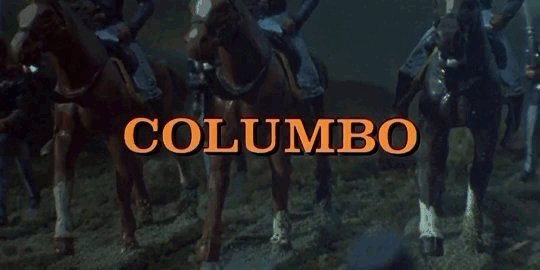








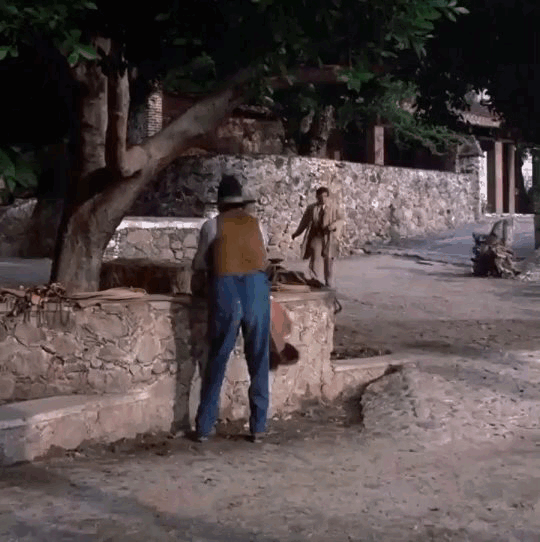
created by Richard Levinson & William Link (1968-2003)
The first one || Next
#columbo#peter falk#lieutenant columbo#tv shows#tv series#my favourite#favourite shows#favourite tv shows
10 notes
·
View notes
Text


Angela Lansbury, the irrepressible three-time Oscar nominee and five-time Tony Award winner who solved 12 seasons’ worth of crimes as the novelist/amateur sleuth Jessica Fletcher on CBS’ Murder, She Wrote, has died. She was 96.
Lansbury, who received an Emmy nomination for best actress in a drama series for each and every season of Murder, She Wrote — yet never won — died in her sleep at 1:30 a.m. (Tuesday) at her home in Los Angeles, her family announced.
She was five days shy of her birthday.
Lansbury went 0-for-18 in career Emmy noms but did get some love from the Academy of Motion Picture Arts and Sciences, who gave her an honorary Oscar in 2013 for her career as “an entertainment icon who has created some of cinema’s most memorable characters, inspiring generations of actors.”
The London-born Lansbury, then 19, received a best supporting actress Oscar nom for her very first film role, as the young maid Nancy in the home of Charles Boyer and his new bride Ingrid Bergman in George Cukor’s Gaslight (1944).
For her third movie, The Picture of Dorian Gray (1945), she received another nom for playing the lovely singer whose heart is broken by the hedonistic title character.
(Her mother, West End actress Moyna MacGill, played a duchess in the film.)
Lansbury then took a turn toward evil and was rewarded with her final Oscar nom for portraying Laurence Harvey’s manipulative mother in the Cold War classic The Manchurian Candidate (1962).
The actress often played characters much older than herself, and in this case, Harvey was just a few years younger than Lansbury.
Her charismatic performance as the eccentric title character in a 1966 production of Mame vaulted her to Broadway superstardom and resulted in the first of her four Tonys for best actress in a musical.
She followed with wins for playing “the madwoman of Chaillot” in 1969’s Dear World, with music and lyrics by Jerry Herman; for starring as the ultimate stage mother Rose in a 1974 revival of Gypsy; for dazzling as the off-the-wall Mrs. Lovett in the original 1979 production of Stephen Sondheim’s Sweeney Todd; and, in 2009, for portraying the clairvoyant Madame Arcati in a revival of the Noël Coward farce Blithe Spirit.
She was still on the road in Blithe Spirit as she approached her 90th birthday, and in December 2018, she was back on the big screen, as the Balloon Lady, in Mary Poppins Returns.
In June, she received yet another Tony, this one for lifetime achievement.
In the early 1980s, Lansbury was not interested in headlining a TV series when she was approached by Columbo creators Richard Levinson and William Link to star in Murder, She Wrote.
The pair earlier had created Ellery Queen, another show about a crime-solving writer, and former All in the Family star Jean Stapleton had already turned them down.
“I couldn’t imagine I would ever want to do television,” Lansbury said in a 1985 interview with The New York Times.
“But the year 1983 rolled around and Broadway was not forthcoming, so I took a part in a miniseries, Gertrude Whitney in Little Gloria, Happy at Last [a dramatization of Gloria Vanderbilt‘s childhood].
“And then [there was] a slew of roles in miniseries, and I began to sense that the television audience was very receptive to me, and I decided I should stop flirting and shut the door or say to my agents, ‘I’m ready to think series.'”
Then 59, Lansbury signed on as the widowed Jessica, a retired English teacher, mystery writer and amateur detective who enjoyed riding her bicycle (she didn’t drive) in the cozy coastal town of Cabot Cove, Maine.
Late in the series, Jessica spent time teaching criminology at a Manhattan university.
Universal Television’s Murder, She Wrote ran from 1984-1996 (plus four telefilms) and was a huge ratings hit on Sunday nights following 60 Minutes.
Both CBS shows appealed to intelligent, older viewers, and Lansbury was the rare woman in the history of television to carry her own series.
The show went 0 for 3 in the Emmy race for outstanding drama series and won just twice in 41 tries overall, according to IMDb.
“Nobody in this town watches Murder, She Wrote,” Lansbury, referring to the TV industry, said in 1991. “Only the public watches.”
The show was ranked in the top 13 in the Nielsen ratings (and as high as No. 4) on Sundays in its first 11 seasons but plummeted to No. 58 when CBS moved it to Thursdays in 1995-96 against NBC’s then-powerful lineup.
The series finale, quite appropriately, was titled “Death by Demographics.”
“What appealed to me about Jessica Fletcher,” she said, “is that I could do what I do best and [play someone I have had] little chance to play — a sincere, down-to-earth woman.
Mostly, I’ve played very spectacular bitches. Jessica has extreme sincerity, compassion, extraordinary intuition. I’m not like her. My imagination runs riot. I’m not a pragmatist. Jessica is.”
During the course of 12 seasons, Jessica solved some 300 murders — and still had time to write more than 30 books!
Angela Brigid Lansbury was born on 16 October 1925 in London to a timber-merchant father and an actress mother, a star of the English stage.
She participated in school plays at Hampstead School for Girls and studied for a year at drama school, passing with honors at the Royal Academy of Music.
With the outbreak of World War II, she, her mother and her younger twin brothers, Bruce and Edgar, moved to the U.S.
(Her father had died when she was 9; her half-sister stayed behind and married actor Peter Ustinov in 1940.)
The blue-eyed Lansbury attended the Feagin School of Dramatic Art in New York City and graduated in 1942.
Although still in her mid-teens, she auditioned for nightclub appearances.
Her songs and imitations of comic actress Beatrice Lillie won her an offer from the Samovar Club in Montreal. She fibbed about her age and got a six-week engagement.
Her mother, who had wound up in Hollywood at the end of the war, brought her daughter to California.
The 18-year-old was signed by MGM and given the role in Gaslight. She then appeared in National Velvet (1944) with Elizabeth Taylor but spent much of the next several years stuck in small parts at the studio.
“I ended up playing some of the most ridiculous roles at MGM,” she said.
But Lansbury found a home in the theater. She made her Broadway debut in 1957 in the farce Hotel Paradiso, and her first musical came with the 1964 Sondheim production Anyone Can Whistle.
On the big screen, Lansbury also was memorable as Elvis Presley’s mom in Blue Hawaii (1961), as a cold-hearted parent in The World of Henry Orient (1964), as the English witch Eglantine Price in Bedknobs and Broomsticks (1971) and as the teapot Mrs. Potts in the animated Beauty and the Beast (1991).
Warming up for her Murder, She Wrote stint, Lansbury starred in two Agatha Christie projects: as a novelist in Death on the Nile (1978) and as the spinster sleuth Miss Marple in The Mirror Crack’d (1980).
When she was 19, she wed actor Richard Cromwell, then 37, but the marriage lasted less than a year. She later discovered he was gay.
In 1949, she wed British agent and producer Peter Shaw, and they were together until his death in 2003. They had two children, Anthony and Deirdre.
In 1971, after her house burned to the ground in Malibu, the family moved to a farmhouse in Cork, Ireland, and stayed there for a decade. She said that saved her kids from succumbing to drugs.
Her brothers also went on to show business careers, with Edgar working as an art director and producer, and Bruce, who died in February 2017, serving as a producer on Murder, She Wrote; The Wild Wild West; Wonder Woman; and other shows.
In addition to Edgar, Anthony and Deirdre, survivors include another son, David; grandchildren Peter, Katherine and Ian; and five great-grandchildren.
A private family ceremony will be held at a date to be determined.
Duane Byrge contributed to this report.



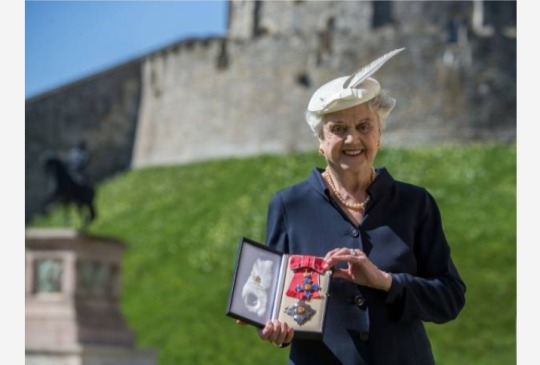
6 notes
·
View notes
Text
Podcast #776: How to Shift Out of the Midlife Malaise
Note: This is a rebroadcast.
When you think about someone having a midlife crisis, you probably think of a man getting divorced, stepping out with a younger woman, and buying a sports car. But my guest today says the often jokey, mockable trope of the midlife crisis we have in our popular culture discounts the fact that the sense of dissatisfaction people can feel in their middle years is quite real, and that the questions it raises are profond, philosophical, and worth earnestly grappling with.
His name is Kieran Setiya, and he’s a professor of philosophy and the author of Midlife: A Philosophical Guide. Kieran and I first discuss what researchers have uncovered about whether the midlife crisis really exists, how it might be better described as a kind of midlife malaise, and how Kieran’s own sense of life dissatisfaction began when he was only in his mid-thirties. We then explore the philosophical reframing that can help in dealing with the existential issues that the journey into midlife often raises, including feeling like you’ve missed out on certain possibilities and feeling regret over your mistakes and misfortunes. We also talk about how to shift out of one primary cause of the midlife malaise — the sense that your life is merely about putting out fires and checking off boxes.
Resources Related to the Podcast
* Seasons of a Man’s Life by Daniel Levinson
* AoM series on Levinson’s research
* Transformations: Growth and Change in Adult Life by Roger Gould
* Passages: Predictable Crises of Adult Life by Gail Sheehy
* Orville Gilbert Brim’s MacArthur study on “Midlife in the United States”
* David Branchflower’s study on the U-shaped curve of happiness
* John Stuart Mill
* Sunday Firesides: Youth Is Not an Identity
* AoM Podcast #770: Philosophical Tools for Living the Good Life
* AoM Podcast #620: How to Deal With Life’s Regrets
* AoM Article: The George Bailey Technique — Mentally Erase Your Blessings for Greater Joy and Optimism
* AoM Podcast #527: Father Wounds, Male Spirituality, and the Journey to the Second Half of Life With Richard Rohr
* AoM Podcast #598: Journeying From the First to the Second Half of Life With James Hollis
Connect With Kieran Setiya
* Kieran’s Website
* Kieran on Twitter
* Kieran’s Podcast
Listen to the Podcast! (And don’t forget to leave us a review!)
Listen to the episode on a separate page.
Download this episode.
Subscribe to the podcast in the media player of your choice.
Listen ad-free on Stitcher Premium; get a free month when you use code “manliness” at checkout.
Podcast Sponsors
Click here to see a full list of our podcast sponsors.
Read the Transcript!
If you appreciate the full text transcript, please consider donating to AoM. It will help cover the costs of transcription and allow others to enjoy it as well. Thank you!
Brett McKay: Brett McKay here, and welcome to another edition of The Art of Manliness podcast. Now, when you think about someone having a midlife crisis, you probably think of a man getting divorced, stepping out with a younger woman, and buying a sports car. But my guest today says the often jokey, mockable trope of the midlife crisis we have in our popular culture, discounts the fact, the sense of dissatisfaction people can feel in their middle years, is quite real. And that the questions it raises are profound, philosophical, and worth earnestly grappling with. His name is Kieran Setiya. He’s a Professor of Philosophy, and the author of Midlife: A Philosophical Guide. Kieran and I first discussed what researchers have uncovered about whether the midlife crisis really exists, how it might be better described as a kind of midlife malaise, and how Kieran’s own sense of life dissatisfaction began when he was only in his mid-30s. We then explore the philosophical reframing that can help in dealing with the existential issues that the journey into midlife often raises, including feeling like you’ve missed out on certain possibilities, and feeling… http://dlvr.it/T4FfYl
1 note
·
View note
Text
Il grande attore britannico, interprete di film quali Gandhi di Richard Attenborough, Tradimenti di David Hugh Jones, L’isola di Pascali di James Dearden, Bugsy di Barry Levinson, Schindler’s List e A.I. Intelligenza artificiale di Steven Spielberg, Oliver Twist di Roman Polanski e molti altri, compie ottant’anni.
Nato nello Yorkshire - in Inghilterra - nel 1943, Krishna Pandit Bhanji - meglio noto come Ben Kingsley -, studia al Pendetlon College e si avvicina giovanissimo al teatro debuttando all’Aldwych Theatre, per poi entrare a far parte della Royal Shakespeare Company con la quale, dalla fine degli anni Sessanta e poi per i quindici anni successivi, sarà interprete prevalentemente shakespeariano. Nello stesso periodo lavorerà anche in film e serie tv.
Esordisce al cinema in un ruolo secondario all’inizio degli anni Settanta in Gli ultimi sei minuti (1972) di Michael Tuchner, per poi tornare, per circa un decennio, sul palcoscenico e in televisione.
Il suo vero esordio cinematografico avviene all’inizio degli anni Ottanta, quando è superlativo protagonista di Gandhi (1982) di Richard Attenborough, con cui vince un meritatissimo Oscar come Miglior Attore Protagonista. Uno di quei casi in cui, anche al di là della bravura dell’attore, la fusione fra personaggio e interprete è tale che lo spettatore/spettatrice, pensando al personaggio, automaticamente pensa anche al suo interprete (come avviene nel caso di Vincent Van Gogh/Kirk Douglas in Brama di vivere di Vincente Minnelli, Onassis/Anthony Quinn in Il magnate greco di Jack Lee Thompson, Nelson Mandela/Morgan Freeman in Invictus di Clint Eastwood, Daniel Day-Lewis/Abramo Lincoln in Lincoln di Steven Spielberg).
Seguono numerosi ruoli cinematografici e televisivi, che dimostrano abbondantemente l’inesauribile talento di uno fra i più grandi attori della sua generazione. Fra le pellicole più significative Tradimenti (1983) di David Hugh Jones, L’isola di Pascali (1988) di James Dearden, in cui offre una prova di grande magnetismo nel ruolo di un inascoltato informatore dell’impero ottomano alla vigilia della guerra, la commedia gialla Senza indizio (1988) di Thom Eberhardt, Bugsy (1991) di Barry Levinson, con Annette Bening.
Negli anni Novanta due fra le sue migliori performances, ovverosia il contabile Stern in Schindler’s List (1993) di Steven Spielberg, con Liam Neeson e Ralph Fiennes, e il misterioso dottor Miranda in La morte e la fanciulla (1995), tratto dal dramma teatrale omonimo di Ariel Dorfman e diretto da Roman Polanski, in cui esprime perfettamente l’ambiguità di un personaggio che oscilla fra vittimismo e spietatezza.
Molto significative anche le sue apparizioni in A.I. Intelligenza artificiale (2001) di S. Spielberg, Il trionfo dell’amore (2001) di Clare Peploe, Oliver Twist (2005), tratto dal romanzo omonimo di Charles Dickens e diretto da Roman Polanski, in cui, con barba rossa e semisdentato, interpreta il vecchio usuraio Fagin, e nel ruolo di un gangster in Slevin - Patto criminale (2006) di Paul McGuigan.
Fra gli altri film ricordiamo Tartaruga ti amerò (1985) di John Irvin, Harem (1985) di Arthur Joffé, Maurice (1987) di James Ivory, Testimony (1988) e The Children (1990) di Tony Palmer, Slipstream (1989) di Steven Lisberger, Una vita scellerata (1990), Quinto macaco (1990) di Eric Rochat, I signori della truffa (1992) di Phil Alden Robinson, con Robert Redford e Sidney Poitier, Dave - Presidente per un giorno (1993) di Ivan Reitman, In cerca di Bobby Fischer (1993) di Steven Zaillian, Specie mortale (1995) di Roger Donaldson, La dodicesima notte (1996) di Trevor Dunn, The Assignment – L’incarico (1997) di Christian Duguay, Fotografando i fantasmi (1997) di Nick Willing, The Confession (1998) di David Hugh Jones, Da che pianeta vieni? (2000) di Mike Nichols, Regole d’onore (2000) di William Friedkin, La casa stregata (2002) di William Sachs, Tuck Everlasting - Vivere per sempre (2002) di Jay Russell, La casa di sabbia e nebbia (2003) di
Vadim Perelman, con cui ottiene una nomination all’Oscar come Miglior Attore non Protagonista, Thunderbirds (2004) di Jonathan Frakes, Il risveglio del tuono (2005) di Peter Hyams, L’ultima legione (2007) di Doug Lefler, Transsiberian (2008) di Brad Anderson, Fifty Dead Men Walking (2008) di Kari Skogland, Shutter Island (2010) e Hugo Cabret (2011) di Martin Scorsese, Il dittatore (2012) di Larry Charles, Walking With the Enemy (2013) di Mark Schmidt, Medicus (2013) di Phillip Stoltz, War Story (2014) di Mark Jackson, Exodus - dei e re (2014) di Ridley Scott, e il cortometraggio All Hell he King (2014) di Louis Esposito.
In epoche più recenti è apparso in film come The Walk (2015) di Robert Zemeckis, Autobahn - Fuori controllo (2016) di Eran Creevy, Il tenente ottomano (2017) di Joseph Ruben, War Machine (2017) di David Michod, Giochi di potere (2018) di Per Fly, Shang-Ci - La leggenda dei dieci anelli (2021) di Destin Daniel Cretton, ispirato al personaggio omonimo dei fumetti Marvel Comics, Dalìland (2022) di Mary Harron , ispirato alla vita di Salvator Dalì, Jules (2023) di Marc Turtletaub, e nei cortometraggi La meravigliosa storia di Sugar (2023) e Veleno (2023) di Wes Anderson, con Ralph Fiennes.
Molto attivo anche in televisione, a partire da fine degli anni Sessanta/inizio Settanta appare in numerosi film tv - A Misfortune (1973) di Ken Loach, Antonio e Cleopatra (1974) di Jon Scoffield, Thank You, Comrades (1978) e The War That Never Ends (1991) di Jack Gold, Le allegre comari di Windsor (1982) di David Hugh Jones, Kean (1982) di Raymund FitzSimons, Camille (1984) di Desmond Davis, Silas Marner: the Weaver of Raveloe (1985) di Giles Foster, Il treno di Lenin (1988) di Damiano Damiani, Murderers Among Us: the Simon Wiesenthal Story (1989) di Brian Gibson, Giuseppe (1995) e Mosè (1995) di Roger Young, Weaponof Mass Distraction (1997) di Stephen Surjik, La bottega degli orrori di Sweeney Todd (1997) di John Schlesinger, Delitto e castigo (1998) di Joseph Sargent, Alice nel paese delle meraviglie (1998) di Nick Willing, Mrs. Harris (2005) di Phyllis Nagy - ed in alcuni episodi di serie e miniserie.
0 notes
Text
Si te gustan las series como Colombo o Se a escrito un crimen ,te gustará ‘Poker Face’
Richard Levinson y William Link son los creadores de dos de las series más icónicas de la historia de la televisión: ‘Colombo’ y ‘Se ha escrito un crimen’. La primera es un hito de la ficción criminal, la serie que llevó a más altas cotas el mecanismo narrativo del howcatchem, “cómo-lo-atrapa”, en contraposición al clásico whodunit, «quién-lo-hizo». La nómina de directores de la serie es…

View On WordPress
0 notes
Photo

It's a pleasure and an honor to have been given the chance to contribute to Places Journal and their new series "Field Notes on Design Activism". I'm delighted to share the pages with a brilliant and thoughtful group of writers, designers and educators @thandiloewenson, @aneeshadharwadker, @chengstein2, @miakimiak, @gmane16, @adam_yarinsky, @o.saloojee and @adnanzm2021 I would like to extend my gratitude to Nancy Levinson for the generous invitation to share my thoughts on AI activism with the audience of Places Journal. A big shout out to the excellent editorial team of Places Journal, Francés Richard and Nick Gamso! You can find the article at www.placesjournal.org #aiactivism #placesjournal #fieldnotesonactivism #ai_activism https://www.instagram.com/p/CkbwJk0OiRs/?igshid=NGJjMDIxMWI=
0 notes
Text

''COLUMBO''
Es una serie de televisión estadounidense creada por Richard Levinson y William Link. Tras dos episodios piloto, en 1968 y 1971, en Estados Unidos la serie se emitió regularmente entre 1971 y 1978, y esporádicamente entre 1989 y 2003, hasta un total de 69 episodios.
Año de inicio: 20 de febrero de 1968
Año de finalización: 1971
Dirección: Richard Levinson, William Link
Créditos: Tomado de Wikipedia
https://es.wikipedia.org/wiki/Columbo
Para ver el tráiler ingresa al enlace:
https://www.youtube.com/watch?v=2CemruKtw_k
0 notes
Text

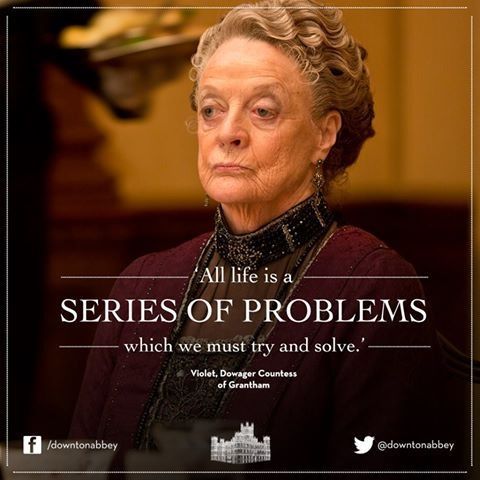
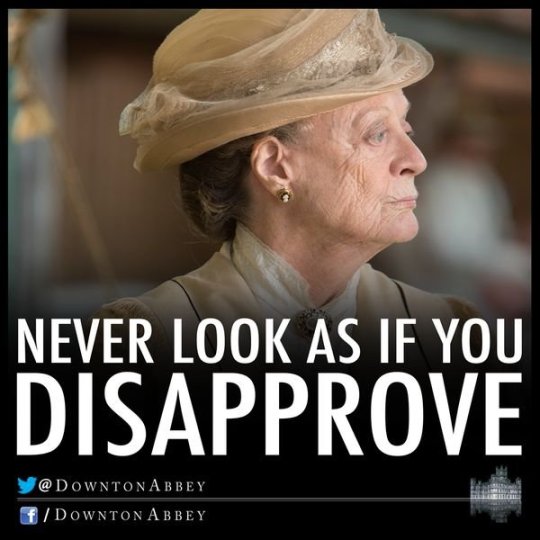
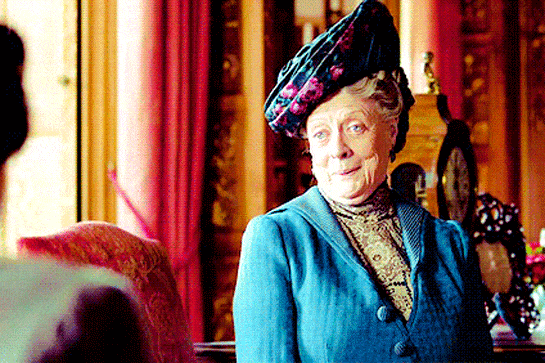
The Gilded Age Timeline Explained: How It Ties To Downton Abbey
The Gilded Age takes place in the same world as Downton Abbey, but is instead set in 1880s New York and features plenty of new characters.
By Erika St. Denis - Jan 18, 2022
Since The Gilded Age is tied to the world of Downton Abbey, an explanation about when it takes place is critical to understanding the overarching timeline Julian Fellowes has created between his two shows. The show itself has been talked about since 2012 when Fellowes was approached to head the series based in 1880s New York. Nearly 10 years after these talks and 7 years since the Downton Abbey show ended, fans are ready to get their Fellowes period-drama fix.
The Gilded Age has been marketed as a sort of prequel to Downton Abbey, but the premise has changed over time. Set during a period of incredible economic growth in United States history, the timeline of the series will certainly set up an interesting foundation that provides deeper context for Downton Abbey. Yet while there is a strong connection between the two series, changes to The Gilded Age’s plot line suggest that the show may be trying to prove that it can stand on its own as a riveting period-drama, just like its predecessor.
The Gilded Age takes place in 1880s New York and exists in the same world as Downton Abbey. While originally the show was meant to portray the courtship of Downton Abbey’s Robert Crawley and Cora Levinson, The Gilded Age appears to be more about the clashing of old versus new money. One storyline viewers seemed to be the most interested in involved the background of the Dowager Countess (Maggie Smith), yet the younger version of her character appears to be notably absent from the new series.
The Downton Abbey series starts the day after the sinking of the HMS Titanic in April 1912, and tells the story of how the Crawley family navigates the changing times of the early twentieth century, and ends in the year 1926. The majority of the show is set in Yorkshire County in England on the Downton Abbey estate, though there are a few ventures the characters take to London and other parts throughout the United Kingdom. The Gilded Age takes place during the 1880s in New York, and since Cora (Levinson) Crawley was brought to London in 1888 for her first social season, this means she would likely still be in the United States at this time.
The character list for The Gilded Age has very few names that are recognizable from the Downton Abbey series. Originally, the series was going to feature the courtship between Lord and Lady Grantham, and perhaps even a young Dowager Countess. But those plot lines have been seemingly abandoned and replaced with the storylines of peripheral characters from Downton Abbey. The Astors will make an appearance, members of which were referenced in Downton Abbey, season 1, episode 1 that had been on the RMS Titanic. The other connection is to that of the Russell family, which used to own Haxby Park, which Richard Carlisle later bought in Downton Abbey, season 2. However, at this time, it’s hard to say whether the Astors and Russells in The Gilded Age are the same ones referenced in Downton Abbey.
The Gilded Age appears to be set up in a way that will provide fresh stories with new and interesting characters and plot lines. While the show has turned out to be a little different from what the original plan was, this is an exciting opportunity to draw in lesser-known characters from Downton Abbey. While The Gilded Age takes place within the same timeline as Downton Abbey, the new show from Julian Fellowes appears to be expanding the world in which the two period-dramas exist in ways fans hadn’t originally expected.
https://screenrant.com/gilded-age-timeline-downton-abbey-link/
Related: Downton Abbey Timeline Explained: When Is A New Era Set?
15 notes
·
View notes
Text
Diamond in the Rough
“I was sitting in my office shooting paper clips at a King size horse fly. It was a little sadistic but he was bigger than I was. Well, about the time I had him down on his knees begging for mercy, the door opened…”
There’s nothing in Dick Powell’s early career to suggest he was destined to play hard-boiled private eyes. Had his bosses at Warner Brothers had their way, he’d have stayed in the song-and-dance roles on which he built his career. But thanks to a gamble by a director, Powell kicked off a new chapter to his career and the result were some great radio shows, including one of the medium’s best - Richard Diamond, Private Detective.
Powell got his start in Hollywood in the 30s as a singer in Warner Brothers musicals, including 42nd Street, and On the Avenue. He was frequently cast in the role of a boyish crooner, even as he approached his 40s. Despite his success, Powell was eager to expand into other roles. His efforts were resisted by Warner Brothers, who wanted to keep Powell right where he was, even if he thought it was the wrong place to be. He pursued the lead role in Double Indemnity, but it ultimately went to another actor pegged in “nice guy” roles - Fred MacMurray.
But later in 1944, RKO and director Edward Dmytryk gave Powell the role he’d been waiting for - Raymond Chandler’s Philip Marlowe in Murder, My Sweet, the film adaptation of the Marlowe novel Farewell, My Lovely. The film was a success, and Powell received rave reviews for his performance. In a flash, he had shed the crooner image he’d been desperate to shake and he embarked on the next stage of his career.
Powell recreated his role as Marlowe on the June 11, 1945 Lux Radio Theater broadcast of Murder, My Sweet, and he starred as private detective Richard Rogue in Rogue’s Gallery from 1945 to 1946. While it was a fine series, it failed to stand out from the crowd of hard-boiled private eyes littering the airwaves in the postwar years. For his next radio effort, Powell wanted to “make something a little bit different of a standard vehicle.” He recorded an audition show as “the man with the action packed expense account,” Johnny Dollar, but he passed on the series for a show that sprang from the mind of Blake Edwards. Edwards would later create the outstanding police procedural The Line-Up for radio, develop Peter Gunn for television, and would become a celebrated writer and director of film arguably most famous for the Pink Panther film series with Peter Sellers.
Powell and his producer, Don Sharp, asked Edwards if he had any ideas for a vehicle for Powell. Edwards said he did (a lie), and went home to write what would become the pilot for Richard Diamond, Private Detective. In Edwards’ original script, Diamond was a former OSS agent; he would evolve into an ex-cop. One trait he would retain as the script evolved was that Diamond was as quick with a quip as he was with his fists. This played to Powell’s natural comedic strengths, and it helped to give the show a unique voice in the sea of detective programs from the era. Unlike other radio shamuses, Diamond would keep up a friendly relationship with his old colleagues on the force - Lt. Walt Levinson, his former partner; and the oafish Sgt. Otis Ludlum, the long-suffering butt of Diamond’s jokes. Diamond flirted with every skirt that came through his office door, but he only had eyes for his Park Avenue girlfriend, Helen Asher. Shows would often close at her apartment, where Diamond would sum up his case and (in a nod to Powell’s old career) Helen might coax him to do a little singing.
Richard Diamond, Private Detective premiered on NBC on April 24, 1949. Powell was supported by Virginia Gregg as Helen; Ed Begley as Levinson; and Wilms Herbert doing double duty as Sgt. Otis and as Helen’s butler, Francis. Joseph Kearns, Peggy Webber, Bill Johnstone, Jack Kruschen, and other West Coast actors filled out the cast. Later in the show’s run, Frances Robinson would take over the role of Helen, and Ted de Corsia, Arthur Q. Bryan (Elmer Fudd), and Alan Reed (Fred Flinstone) would rotate in and out as Levinson.
The show ran without a sponsor for the first year before being picked up by the Rexall Drug Company (“Good health to all from Rexall!”) in June 1950. In January 1951, the show switched networks and picked up Camel cigarettes as its new sponsor. The show took its final bow on June 27, 1952 (although repeats popped up in the summer of 1953). Powell pulled the plug on the show as he entered a third phase of his career as a successful director and producer.
It was in this capacity that Powell brought Richard Diamond to television in 1957 for a four-season run starring David Janssen in the title role, minus the crooning of the radio series. Janssen would later star as Dr. Richard Kimble on The Fugitive. The Diamond TV show is perhaps best known today for its character of Diamond’s secretary, Sam, who was only shown from the waist down to show off her legs. The first actress to furnish Sam’s legs was a young Mary Tyler Moore.
In honor of his anniversary, here are ten of my favorite Richard Diamond radio adventures. Sit back and enjoy some sleuthing and singing with Dick Powell and company in these sensational stories.
"The Lillian Baker Case" - This one is a good showcase for Diamond's girlfriend Helen Asher, who gets to take a rare role in the case of the week. At a department store, Helen witnesses an elderly woman shoplifting. It turns out she's a wealthy eccentric, and later that afternoon she dies - allegedly after leaping from her balcony. (9/3/49)
"The Jerome J. Jerome Case" - Joseph Kearns plays the titular eccentric character - a man who claims to be a millionaire, a genius inventor, and a private detective. He wants to partner with Diamond, but as soon as the gumshoe tries to dismiss him it turns out the kook may have information about an actual murder. (9/17/49)
"The Louis Spence Case" - An unusual, but very exciting, episode finds Diamond racing against time to save his old friend Lt. Walt Levinson. A deranged bomber has escaped from prison, and he's taken the lieutenant hostage. Unless the mayor jumps to his death from city hall within the hour, the bomber will blow the precinct - and Walt - to kingdom come. (3/5/50)
"The Statue of Kali" - It's Richard Diamond's version of The Maltese Falcon (complete with Paul Frees doing his best Sydney Greenstreet). An ivory statue is delivered to Diamond by a dying man, and it's being hunted by nefarious characters from all around the world. (4/5/50)
"The Martha Campbell Kidnap Case" - Diamond is hired to deliver the ransom when a wealthy woman is kidnapped, but both he and the lady's nephew are knocked out, the ransom money is taken, and the kidnap victim is killed. Rick has to use some creativity and theatricality to figure out what happened. (7/26/50)
"The Oklahoma Cowboy Murder Case" - Diamond trades the bright lights of the big city for the clear skies of the plains in this episode that was later adapted as an episode of Peter Gunn. Rick heads west to investigate a suspicious death - a wealthy rancher who expired when he fell from his horse. (9/27/50)
"The Cover-Up Murders" - Rick and Walt partner again when a serial killer stalks the city. Part of his MO is to call the police and boast that he'll kill someone that night at eight o'clock. But what appears to be random madness may have a clear motive, and it's up to Diamond to stop the killings before more bodies drop. (11/22/50)
"Blue Serge Suit" - Jim Backus (later Mr. Howell on Gilligan's Island) is Diamond's new client - a tailor whose supply of blue serge is raided and stolen by intruders. When Diamond's own suit is snatched, he's on the trail of a gang of spies. (2/9/51)
"Lady in Distress" - A beautiful woman hires Diamond, and then she drops dead in his office. With nothing to go on - he didn't even know her name - Rick takes the case and tries to learn what had her so scared and what led to her death. It's a story that was recycled quite a few times. Jeff Regan and Johnny Dollar both solved variations of this script, but the Richard Diamond version is my favorite. (2/23/51)
"The Red Rose" - In another story later reworked as a TV episode of Peter Gunn, Diamond is hired to keep a client alive. The man hired a hit man to do away with himself, but he's had a change of heart. Unfortunately, the hit man is a committed professional and he intends to finish the job. (3/2/51)
Check out this episode!
9 notes
·
View notes